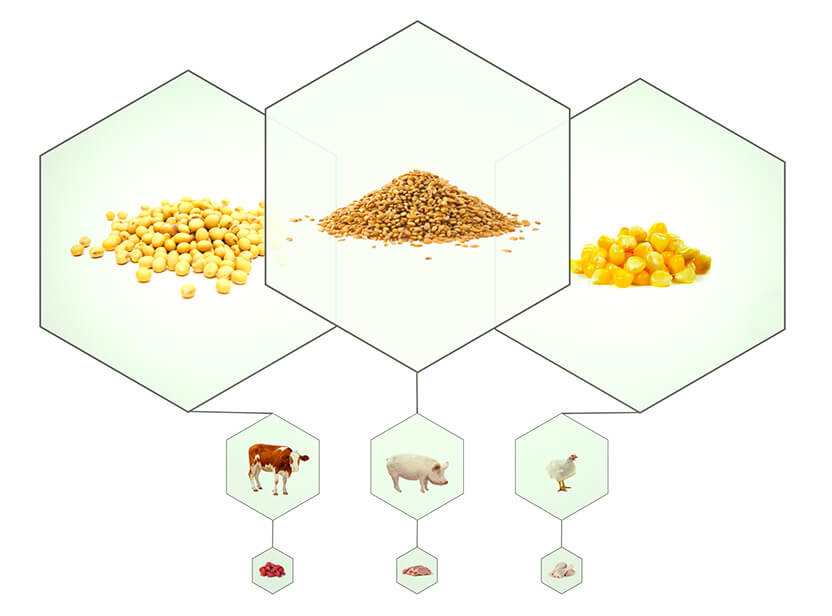

While most people grow up believing that animal agriculture is a natural and efficient system for getting protein, the reality paints a vastly different picture. Whether it’s land, water or air - getting our protein from animals is having a serious impact on the planet, and the future generations depending on it.
According to researchers from Oxford, meat, dairy, egg and fish farming use 83% of the world’s farmland, yet provide only 18% of the world’s calories.
The reason livestock require so much land is because animals are actually just the “middlemen”, consuming on average six times more protein than they even produce.

And with more than 70 billion animals consumed globally every year, growing animal feed requires vast amounts of land. Which is why the single biggest source of habitat destruction is said to be the livestock sector. For example, in South America, some 70% of former forests in the Amazon are now used to graze cattle, with much of the remainder used to grow feed crops for the cattle. Anti-poaching rangers on the “frontlines” of protecting endangered species see these effects firsthand.

“The actual biggest threat we have is the meat industry and the land that they are continually taking away from what we have left of these natural wilderness areas. Inch by inch, yard by yard, mile by mile.”
- Damien Mander, founder of the International Anti-Poaching Foundation
While rain barrels and low-flush toilets are important, only 4% of humanity’s water usage actually occurs in the home. By contrast, 27% of humanity’s “water footprint” is used to produce animal foods. This is because, once again, animals are the “middlemen”, requiring on average six times more protein than they produce, which requires an immense amount of animal feed, which in turn requires vast amounts of the world’s freshwater.
“25% of the rivers in the world no longer reach the ocean, because we’re taking out so much water to produce feed.”
- Johan Rockstrom, former executive director of the Stockholm Resilience Centre
Unfortunately, it's not just water depletion that’s an issue, it’s also water contamination. In the United States alone, farm animals produce nearly 50 times more waste per year than America’s human population, polluting rivers, lakes and groundwater across the country. Globally, livestock production is one of the leading causes of water pollution.
The livestock sector is responsible for 15% of global man-made emissions. To put that in perspective, that's about the same as all the emissions from all the transport in the world (including planes, trains, cars, vans and ships.)
Our food choices play a significant role in the biggest environmental challenges of our time. Just as the food we choose to eat is part of the problem, thankfully it is also the solution. For example, in the US, where per capita meat consumption is three times the global average, shifting away from an animal-based diet would reduce agricultural emissions by up to 73%, and save one million liters of water per person, per year. Globally, this would free up 3.1 billion hectares, an area the size of all of Africa, taking pressure off the world's most endangered ecosystems and species.

“The message is overwhelming, both for public health and environmental reasons. The more plants you can eat and the less meat and dairy you can consume, the better.”
— Professor Tim Lang, Professor of Food Policy at City University London
Page References
Poore, J. and T. Nemecek. 2018. "Reducing food's environmental impacts through producers and consumers." Science 360:987-992.
Aiking, H. 2011. "Future Protein Supply." Trends in Food Science & Technology 22:2-3.
Steinfeld, H., Gerber, P., Wassenaar, T., Castel, V., Rosales, M., & De Haan, C. 2006. Livestock’s long shadow: Environmental issues and options. Rome, Italy: FAO.
Hoekstra, Arjen Y. 2012. "The hidden water resource use behind meat and dairy." Animal Frontiers 2:2, 3-8.
Newsweek, 2015: http://www.newsweek.com/2015/12/18/two-numbers-animal-manure-growing-headache-america-402205.html